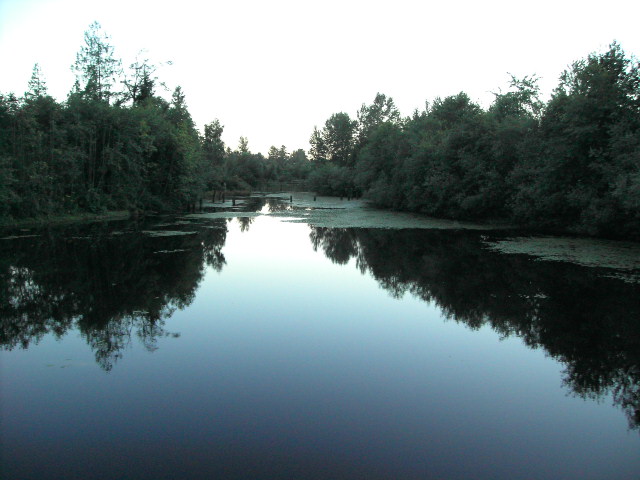Print Edition: July 1, 2015

With the upcoming commercial development on the corner of Hwy 1 and McCallum Rd. and the various residential properties springing up around town, Abbotsford seems to be expanding each day. However, Abbotsford is also home to parks, agricultural land, green space, and water, which can see impact from pollution and littering.
UFV alumna Ashleigh Yakemchuk’s last research project at UFV asked if a concrete jungle and the rivers running through it could happily co-exist. Having just graduated with a major in physical geography at UFV, Yakemchuk researched the impact of the Auguston development on the water geochemistry of the Clayburn watershed. Her research was part of a bigger project called the Global Rivers Observatory. Based in Woods Hole, Massachusetts, this global project aims to analyze the dissolved oxygen content, dissolved nutrients, major ions, and water temperature of major river systems. Yakemchuk says she got involved with this research project when her geography professor Steven Marsh sent out emails looking for volunteers to take water samples.
Yakemchuk is the first to investigate the water samples of the Clayburn creek since Auguston was developed in the early 2000s. She analyzed two sites — one above the development and one below. Yakemchuk took a trip with the samples to the Woods Hole Oceanographic Institute (WHOI), a partner of the Global Rivers Observatory.
“I went to WHOI to analyze the nutrients and major ions,” she says. “We don’t have the technology to do it here.”
She found the site above Auguston had higher concentrations of the major anions chlorine, sulphate, and fluoride. Below Auguston, there were higher concentrations of potassium, magnesium, and sodium. After looking at the data, Yakemchuk says she had to try and come up with explanations for why there were higher concentrations of these elements in the first place.
Draining into the stream below Auguston, the Ledgeview Golf Course applies potassium, nitrogen, and phosphorus fertilizer two to five times a year. Yakemchuk explains that this probably influenced her larger concentration of potassium.
“Whatever’s not [absorbed] by the grass is carried into the storm drains with rain. The storm drains then flow directly into the Fraser River,” she says.
Sulphate was higher in the above site, but Yakemchuk had no clear explanation for that.
“The above site did have a lot of houses up there, but it was more hobby farms,” she says. “They might be spreading manure.” This could explain why nitrates existed in higher concentrations in the above site, as they are found in manure and agricultural fertilizers.
Yakemchuk also looked at temperature and dissolved oxygen. She explains just how important these factors are to Clayburn, a salmon-bearing watershed.
“Salmon are very particular about what kind of water temperatures they can handle,” she says. “So, [if] temperatures get too hot, they can’t spawn or be there.” Monitoring dissolved oxygen levels is also important — if they get too low, salmon can have trouble breathing. Yakemchuk says salmon are very important to the Fraser Valley, as they are a vital part of a river’s ecosystem.
“If we start losing the salmon, we start losing other types of valuable aquatic life in the watershed,” she says.
In addition to higher nutrients in the water, Yakemchuk also came across littering. Although she wasn’t testing for smaller plastics in the water, she says many people dump cushions, pots, plants, cups, and other little plastics.
Next year, Yakemchuk is working with the Catalyst Agri-Innovations Society and researching sustainable agriculture. Her next project involves using duckweed to produce clean wastewater.
“There’s no shortage of duckweed,” Yakemchuk says. “Duckweed likes high nutrients, dirty water, and high temperatures.”
She says that wastewater from the duckweed can be used on farms in lieu of using freshwater, which would reduce the amount of freshwater we use.
In the future, Yakemchuk says she’s interested in projects that involve looking at developmental impacts on water.
“We’re slowly developing everywhere. It’d be nice to get a handle on how it actually impacts our watershed.”
With files from Megan Lambert.


